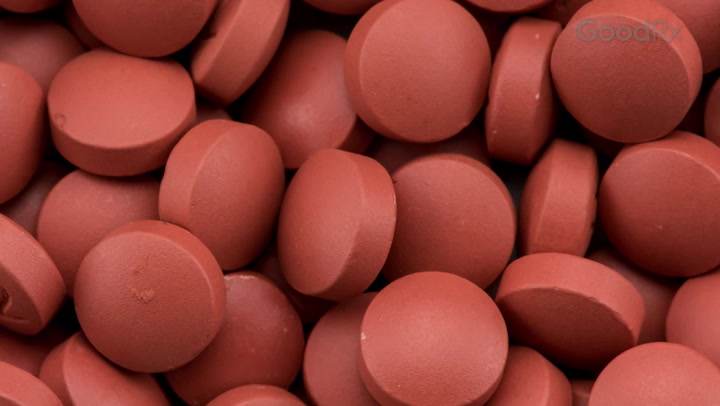
How Much Tylenol (Acetaminophen) Can I Take?
Key takeaways:
Tylenol (acetaminophen) is a common over-the-counter (OTC) medication that helps relieve pain and reduce fever. It’s safe for children and adults at recommended doses.
For most adults, the maximum daily dose of Tylenol is 4,000 mg. For kids, the maximum dose is 75 mg/kg (but not more than 4,000 mg). Some people should take less Tylenol per day if they drink large amounts of alcohol or have certain health conditions, such as liver damage.
In terms of how often you can take Tylenol, the answer is every 4 to 6 hours as needed. But it’s important to stick to the recommended daily dosage. Ingesting too much acetaminophen can cause side effects. This includes severe liver damage that requires prompt medical attention.
Access savings on related medications
Table of contents
When you get hit with a headache or come down with a fever, it might feel natural to reach for Tylenol (acetaminophen). It’s one of the most common over-the-counter (OTC) pain relievers and antipyretics (fever reducer) available today. But if you’re taking Tylenol frequently, you might wonder: “Just how much Tylenol can I take?”
Overall, Tylenol is safe to take when consumed within recommended doses. But it’s possible to take too much Tylenol. You should be especially careful with it if you have liver damage, consume large amounts of alcohol, or take other medications containing acetaminophen. This is because the amount you can safely take may be different.
Read on to learn about how much Tylenol is too much, in addition to side effects that can happen if you take too much Tylenol. You should always check with your prescriber or pharmacist for guidance about what dose of Tylenol is right for you.
Save over 40% on Qsymia with GoodRx
Discover the once daily Qsymia for weight management. Qsymia is for adults and children 12-17 in combination with a healthy diet and regular exercise.

How often can you take Tylenol?
You can take Tylenol several times per day, as needed. But the maximum dose of Tylenol adults should take in a day is 4,000 mg. This limit has been validated by several studies.
However, because Tylenol can cause liver damage at doses higher than 4,000 mg per day, some experts recommend sticking to a lower maximum dose to play it safe: 3,250 mg per day. This precaution is especially recommended if you’re taking it daily for more than a week at a time. What’s more, manufacturers of acetaminophen-containing products may suggest a different daily dose based on the tablet strength for that specific product.
You have a higher risk of developing liver damage from taking acetaminophen if you have one or more of the following characteristics:
Low body weight
You have more than 3 drinks of alcohol in a day
In these cases, you may need to drop your maximum daily dose to as low as 2,000 mg per day or avoid acetaminophen altogether. Always ask your healthcare professional (HCP) if you aren’t sure how much acetaminophen you should take.
How often can kids take Tylenol?
Children generally shouldn’t take more than five doses of acetaminophen in a day. But the typical Tylenol dosage for kids is based on how much they weigh. The maximum daily dose is 75 mg/kg per day, not to exceed 4,000 mg in a day. More on this next.
Advice for maximizing relief: New to Tylenol? Here you'll find expert tips for taking Tylenol and how fast you can expect it to work.
Tylenol and alcohol: It’s not recommended to combine them. Find out the risks of drinking alcohol while taking Tylenol.
Opioid alternatives: These are the most important things to know about different types of non-opioid pain relievers — and how they compare to one another.
Tylenol dosage information for children and adults
Tylenol dosages are different for kids and adults. While adult dosages are usually based on the strength of the pill (325 mg, 500 mg, or 650 mg for OTC products), children’s dosing is weight-based. The American Academy of Pediatrics recommends taking 10 to 15 mg/kg per dose for children, but most OTC Tylenol products list a set dose for a given weight range and age range. It’s important to follow whatever instructions you’re given by your HCP.
The table below lists dosage information for some common OTC Tylenol medications.
Table: Dosage Information for Common OTC Tylenol Products
Product | Acetaminophen strength | Dosage frequency | Directions |
|---|---|---|---|
325 mg | 1-2 tablets every 4-6 hours as needed | Maximum of 10 tablets in 24 hours (5 tablets for kids younger than 12) Total daily dose: No more than 3,250 mg (1,625 mg for kids younger than 12) | |
500 mg | 2 tablets every 4-6 hours as needed | Maximum of 6 tablets in 24 hours Total daily dose: No more than 3,000 mg | |
650 mg | 2 tablets every 8 hours as needed | Maximum of 6 tablets in 24 hours Total daily dose: No more than 3,900 mg | |
Acetaminophen 250 mg / ibuprofen 125 mg | 2 tablets every 8 hours as needed | Maximum of 6 caplets in 24 hours Under 12 years old: Ask your child’s pediatrician to confirm their dose | |
160 mg | Weight/age-based dose every 4 hours as needed | Maximum of 5 doses in 24 hours Under 2 years old: Ask your child’s pediatrician to confirm their dose | |
160 mg per 5 mL | Weight/age-based dose every 4 hours as needed | Maximum of 5 doses in 24 hours Under 2 years old: Ask your child’s pediatrician to confirm their dose | |
160 mg per 5 mL | Weight/age-based dose every 4 hours as needed | Maximum of 5 doses in 24 hours. Under 2 years old: Ask your child’s pediatrician to confirm their dose | |
80 mg 120 mg 325 mg | Age-based dose every 4-6 hours as needed | Maximum of 4-6 doses in 24 hours, depending on the product Recommended age ranges differ by product |
What are the side effects of too much Tylenol?
Acetaminophen is well tolerated. It doesn’t normally cause side effects at recommended doses. The side effect that is most likely to happen is a skin rash.
More serious side effects stem from taking too much Tylenol. This includes rare, severe skin rashes and liver damage. Symptoms of liver damage from an acetaminophen overdose include vomiting, abdominal pain, and low blood pressure. In severe cases, kidney damage, confusion, and death can occur.
Is it harmful to take Tylenol every day?
In general, no. Most people can safely take Tylenol within recommended doses every day. It more so matters how much Tylenol you take.
If you have normal liver function and plan to take Tylenol for longer than 1 week, it’s safest to use a lower maximum daily dose of 3,250 mg mg per day. This helps to avoid possible liver harm.
However, if you have liver disease or another condition listed above that makes you more prone to liver problems, you should check with your HCP before taking Tylenol. They can give you personalized information on how much Tylenol, if any, is safe to take.
Can you overdose on Tylenol?
Yes. It’s easy to accidentally take too much Tylenol. This is largely because there are hundreds of stand-alone and combination medications that contain acetaminophen.
A few common OTC medications that contain acetaminophen include NyQuil (acetaminophen / dextromethorphan / doxylamine), Excedrin Migraine (acetaminophen / aspirin / caffeine), and Midol Complete (acetaminophen / caffeine / pyrilamine). Many prescription medications contain acetaminophen too.
If you’re taking a combination medication that contains acetaminophen — whether you’re aware of it or not — and you take Tylenol on top of that, it can be easy to exceed the maximum dose. This increases the risk of liver damage.
Good to know: Unintentional Tylenol overdoses cause about half of the cases of liver damage in the U.S. It’s estimated that acetaminophen overdose causes about 56,000 visits to the ER, 2,600 hospitalizations, and 500 deaths yearly in the U.S.
How acetaminophen affects the liver
Acetaminophen is mainly broken down in the liver by two different “pathways” — glucuronidation and sulfation. But, when your body has too much acetaminophen in it, these pathways can no longer break down the medication effectively. When this happens, acetaminophen is broken down by an enzyme called cytochrome P450 instead.
This alternative process can cause a toxic substance called NAPQI to build up in your body. Under normal circumstances, a molecule called glutathione helps neutralize NAPQI. However, when too much NAPQI is in your system, there’s not enough glutathione to break it down.
Excess NAPQI can damage liver cells and cause liver damage.
How to avoid taking too much Tylenol
You can avoid taking too much Tylenol by carefully reviewing all of the prescription and OTC medications you take. Look for any and all that contain Tylenol. And remember, the medication also goes by names such as acetaminophen, APAP, and paracetamol. These are all the same thing and it’s important not to double up.
Once you know all of the medications you take that have acetaminophen in them, add up the total dose of acetaminophen you take in a day. If it’s more than 4,000 mg, you’re taking too much acetaminophen. You should contact your HCP to discuss a safer dose. If it’s less than 4,000 mg in one day but your dose is still high, it’s still a good idea to check your dose with your HCP.
The bottom line
Tylenol (acetaminophen) is a common over-the-counter (OTC) medication that helps treat pain and fever. It’s safe for most people to take at recommended doses. The maximum daily dose of Tylenol for adults is 4,000 mg, and for kids, it’s 75 mg/kg (but not more than 4,000 mg). Your daily dose of Tylenol includes acetaminophen from all sources — including any prescription and OTC combination medications that contain acetaminophen. Some people should take less Tylenol per day if they have certain health conditions, including liver damage or heavy alcohol use.
Taking too much Tylenol — whether on accident or on purpose — can cause liver damage that requires medical attention. Always talk to your HCP to confirm how much acetaminophen is OK for you to take.
Why trust our experts?



References
Agrawal, S., et al. (2023). Acetaminophen toxicity. StatPearls.
Blough, E. R., et al. (2011). Acetaminophen: Beyond pain and fever-relieving. Frontiers in Pharmacology.
Center for Drug Evaluation and Research. (2017). Recommended warning for over-the-counter acetaminophen-containing drug products and labeling statements regarding serious skin reactions: Guidance for industry. U.S. Food and Drug Administration.
Chandok, N., et al. (2010). Pain management in the cirrhotic patient: The clinical challenge. Mayo Clinic Proceedings.
DailyMed. (n.d.). Tylenol.
Dwyer, J. P., et al. (2014). Analgesia for the cirrhotic patient: A literature review and recommendations. Journal of Gastroenterology and Hepatology.
Gerriets, V., et al. (2024). Acetaminophen. StatPearls.
Hayward, K. L., et al. (2016). Can paracetamol (acetaminophen) be administered to patients with liver impairment? British Journal of Clinical Pharmacology.
Healthychildren.org. (2021). Acetaminophen dosing tables for fever and pain in children. American Academy of Pediatrics.
Krenzelok, E. P., et al. (2012). Confusion: Acetaminophen dosing changes based on no evidence in adults. Drugs in R&D.
Johnson & Johnson Consumer Inc. (2023). Tylenol 8 hr arthritis pain [package insert].
Johnson & Johnson Consumer Inc. (2024). Children's Tylenol [package insert].
Johnson & Johnson Consumer Inc. (2024). Children's Tylenol suspension [package insert].
Johnson & Johnson Consumer Inc. (2024). Infant's Tylenol [package insert]. DailyMed.
Johnson & Johnson Consumer Inc. (2024). Motrin dual action with Tylenol [package insert].
Johnson & Johnson Consumer Inc. (2024). Tylenol extra strength [package insert].
Johnson & Johnson Consumer Inc. (2024). Tylenol regular strength [package insert].
Llamas, M. (2014). FDA sets acetaminophen dose limit, warns of liver damage. Drugwatch.
PDR, LLC. (n.d.). Tylenol muscle aches & pain.
Taro Pharmaceuticals USA, Inc. (2020). FeverAll acetaminophen suppository [package information].
U.S. Food and Drug Administration. (2015). Questions and answers: FDA warns of rare but serious skin reactions with the pain reliever/fever reducer acetaminophen.
Was this page helpful?
Related Articles
Browse medications
View AllResearch prescriptions and over-the-counter medications from A to Z, compare drug prices, and start saving.




























